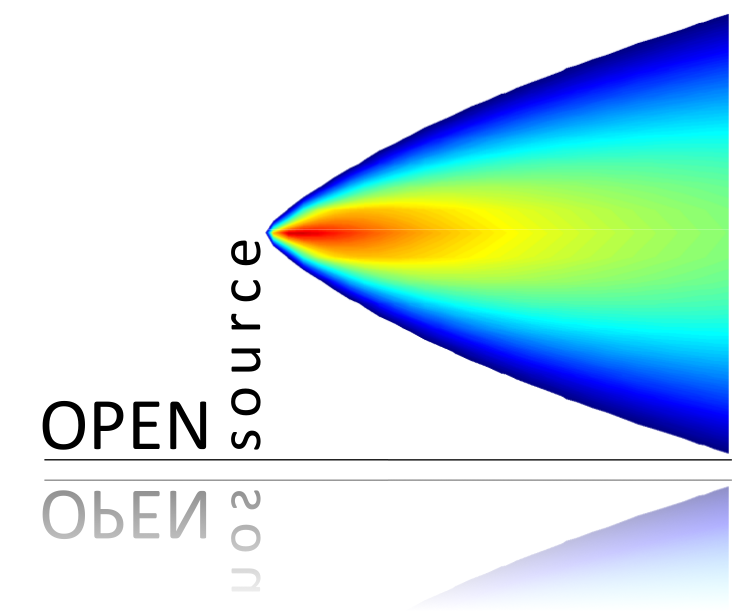NOTE An online openair book is being developed, see https://bookdown.org/david_carslaw/openair/.
For the main openair website, see https://davidcarslaw.github.io/openair/.

openair is an R package developed for the purpose of analysing air quality data — or more generally atmospheric composition data. The package is extensively used in academia, the public and private sectors. The project was initially funded by the UK Natural Environment Research Council (NERC), with additional funds from Defra. The most up to date information on openair can be found in the package itself and at the book website here.
Further details, including blogs on openair can be found at davidcarslaw.com
Installation of openair from GitHub is easy using the devtools package. Note, because openair contains C++ code a compiler is also needed. For Windows - for example, Rtools is needed.
openair has developed over several years to help analyse atmospheric composition data; initially focused on air quality data.
This package continues to develop and input from other developers would be welcome. A summary of some of the features are:
importAURN and importKCL functions.timeAverage and selectByDate to make it easier to manipulate atmospheric composition data.windRose and pollutionRose.type option available in most functions.type option to easily evaluate models by season, hour of the day etc. These include key model statistics, Taylor Diagram, Conditional Quantile plots.It is easy to import hourly data from 100s of sites and to import several sites at one time and several years of data.
library(openair)
kc1 <- importAURN(site = "kc1", year = 2011:2012)
kc1
## # A tibble: 17,544 × 18
## site code date co nox no2 no o3 so2 pm10
## <chr> <fct> <dttm> <dbl> <dbl> <dbl> <dbl> <dbl> <dbl> <dbl>
## 1 London N… KC1 2011-01-01 00:00:00 0.2 44 38 4 14 5 40
## 2 London N… KC1 2011-01-01 01:00:00 0.2 38 29 6 28 3 36
## 3 London N… KC1 2011-01-01 02:00:00 0.2 32 31 1 18 3 31
## 4 London N… KC1 2011-01-01 03:00:00 0.2 31 29 1 14 3 31
## 5 London N… KC1 2011-01-01 04:00:00 0.2 31 29 1 16 3 29
## 6 London N… KC1 2011-01-01 05:00:00 0.1 29 27 1 24 3 25
## 7 London N… KC1 2011-01-01 06:00:00 0.1 27 25 1 24 3 25
## 8 London N… KC1 2011-01-01 07:00:00 0.1 31 29 1 18 3 28
## 9 London N… KC1 2011-01-01 08:00:00 0.2 55 44 8 4 3 24
## 10 London N… KC1 2011-01-01 09:00:00 0.2 57 44 9 6 3 24
## # … with 17,534 more rows, and 8 more variables: pm2.5 <dbl>, v10 <dbl>,
## # v2.5 <dbl>, nv10 <dbl>, nv2.5 <dbl>, ws <dbl>, wd <dbl>, air_temp <dbl>Using the selectByDate function it is easy to select quite complex time-based periods. For example, to select weekday (Monday to Friday) data from June to September for 2012 and for the hours 7am to 7pm inclusive:
sub <- selectByDate(kc1,
day = "weekday",
year = 2012,
month = 6:9,
hour = 7:19)
sub
## # A tibble: 1,118 × 18
## date site code co nox no2 no o3 so2 pm10
## <dttm> <chr> <fct> <dbl> <dbl> <dbl> <dbl> <dbl> <dbl> <dbl>
## 1 2012-06-01 07:00:00 London N… KC1 0.23 36 23 9 24 3 6
## 2 2012-06-01 08:00:00 London N… KC1 0.23 33 21 7 34 3 9
## 3 2012-06-01 09:00:00 London N… KC1 0.23 23 19 2 52 3 6
## 4 2012-06-01 10:00:00 London N… KC1 0.23 17 13 2 62 3 7
## 5 2012-06-01 11:00:00 London N… KC1 0.23 17 13 2 70 3 9
## 6 2012-06-01 12:00:00 London N… KC1 0.23 21 19 1 78 3 8
## 7 2012-06-01 13:00:00 London N… KC1 0.23 36 29 5 68 3 9
## 8 2012-06-01 14:00:00 London N… KC1 0.23 25 21 2 80 3 6
## 9 2012-06-01 15:00:00 London N… KC1 0.23 27 23 2 80 3 7
## 10 2012-06-01 16:00:00 London N… KC1 0.23 34 29 4 58 3 10
## # … with 1,108 more rows, and 8 more variables: pm2.5 <dbl>, v10 <dbl>,
## # v2.5 <dbl>, nv10 <dbl>, nv2.5 <dbl>, ws <dbl>, wd <dbl>, air_temp <dbl>Similarly it is easy to time-average data in many flexible ways. For example, 2-week means can be calculated as
type optionOne of the key aspects of openair is the use of the type option, which is available for almost all openair functions. The type option partitions data by different categories of variable. There are many built-in options that type can take based on splitting your data by different date values. A summary of in-built values of type are:
hemisphere option that can be either “northern” (default) or “southern”longitude and latitudewd) is available type = "wd" will split the data up into 8 sectors: N, NE, E, SE, S, SW, W, NW.type = "season" will just split the data into four seasons regardless of the year.If a categorical variable is present in a data frame e.g. site then that variables can be used directly e.g. type = "site".
type can also be a numeric variable. In this case the numeric variable is split up into 4 quantiles i.e. four partitions containing equal numbers of points. Note the user can supply the option n.levels to indicate how many quantiles to use.
openair can plot basic wind roses very easily provided the variables ws (wind speed) and wd (wind direction) are available.

However, the real flexibility comes from being able to use the type option.
